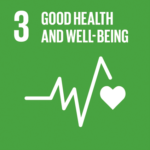Harnessing Solar Power: A Revolutionary Self-Sterilizing Material
Blog - Published 2.1.2024
The COVID-19 pandemic has brought about unprecedented changes to our world. The swift and widespread transmission of pathogens has created an urgent need for antimicrobial and antiviral materials in the medical field.
In the midst of the pandemic, researchers at Aalto University and VTT Technical Research Centre of Finland began to envision a wood-based self sterilizing material.
“The first thing we thought about was definitely face masks. So what if we not only stop the aerosols from our breathing, but also deactivate them, to make the masks even safer.” Eduardo Anaya Plaza, Aalto University
In a collaborative effort, funded by the Academy of Finland FinnCERES Flagship Programme, a visionary concept emerged: self-sterilizing material for disaster-stricken areas where electricity is a luxury.
Sunlight-Powered Innovation
In conditions where electricity is scarce, such as war zones or post-earthquake settings, healthcare services are essential. The goal of the Solar Safe -team was to develop cellulosic materials that could self-sterilize under sunlight. The material is biodegradable, addressing also environmental concerns by avoiding plastic sources. The team’s innovative approach was twofold, involving both cellulosic materials and light-absorbing dyes to create a hybrid self-sterilizing material.
The Chemistry of Success
Creating an effective self-sterilizing material required the perfect synergy between dyes and cellulose. The team at VTT’s Solar Safe project embarked on a challenging journey to achieve this chemical bonding.
“The most challenging phase for this project was to find a suitable strategy for that conjugation. We used both physical and covalent strategies to combine materials together.” Katarina Solin, Research Scientist VTT Technical Research Centre of Finland
A Coffee Break Revelation
While initial trials proved the material’s effectiveness against microbes, the challenge of scaling up the process arose. Economical feasibility was a significant concern. In a stroke of inspiration during a coffee break discussion an the concept of combining mechanochemistry with the ongoing project was born.
“So on the same day, within the next hour, actually, we already started with the first experiments, and this is how we developed this new solid state approach for making phatalocyanines (blue dyes).” Daniel Langerreiter, Doctoral Researcher, Aalto University
Mechanochemistry enables chemical reactions inducing mechanical force. Notably, this method eliminates or reduces the need for solvents, lowers the reaction temperature and thereby reduces costs and environmental impact, aligning with the goal of greener chemical processes.
A Breakthrough in Barcelona
Finally, the new material produced at Aalto and VTT was tested for its antimicrobial efficiency in Prof. Santi Nonell’s laboratory at the IQS School of Engineering in Barcelona, Spain, where Daniel Langetierre at spent three months thanks to the FinnCERES GoGlobal funding. The results were remarkable, demonstrating that with standard parameters, the material could effectively kill microbes within 30 minutes. Unlike traditional biocides, this approach showed no evidence of microbial resistance, promising a reliable and lasting solution.
A Promising Future
The journey is far from over. The team is now pursuing two distinct paths for further development. The first involves translating the proof of concept into practical applications, using the material as coatings and thoroughly testing its performance and longevity. In parallel, they are delving into chemical synthesis, exploring modifications of existing dyes and even developing entirely new families of dyes, pushing the boundaries of what has been done before.
Read the latest academic article.

